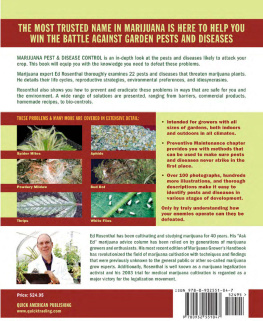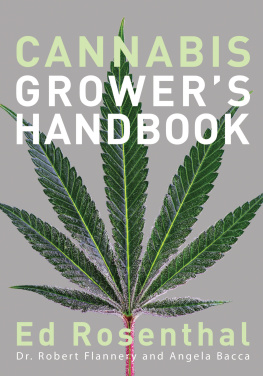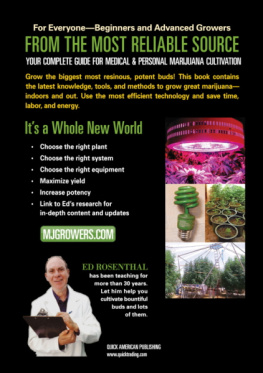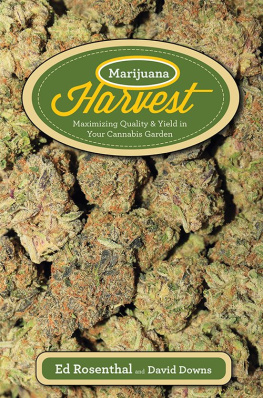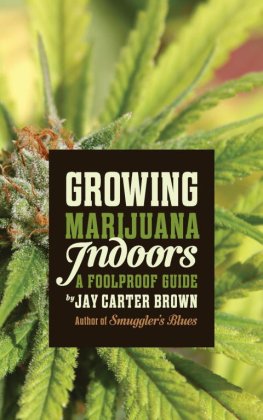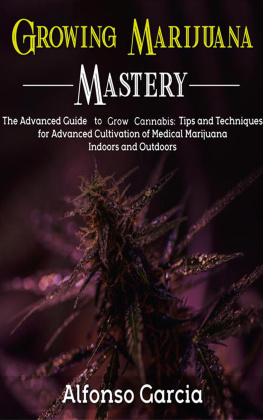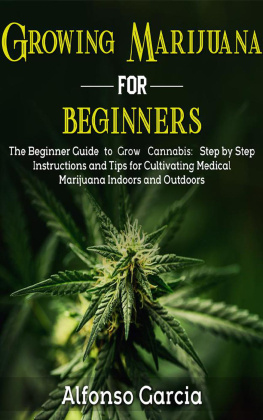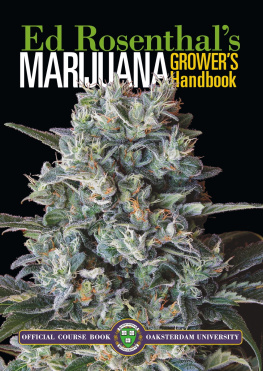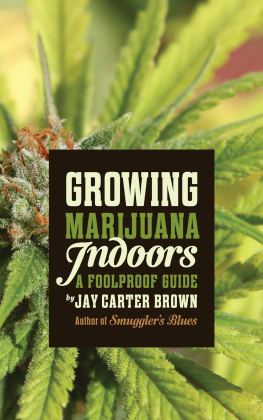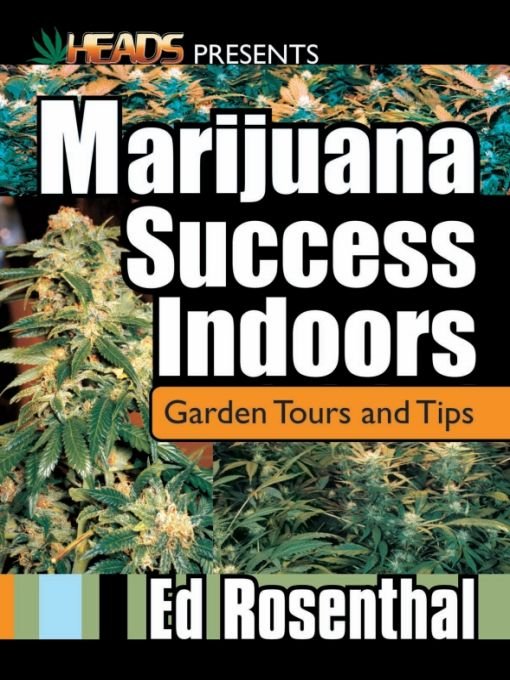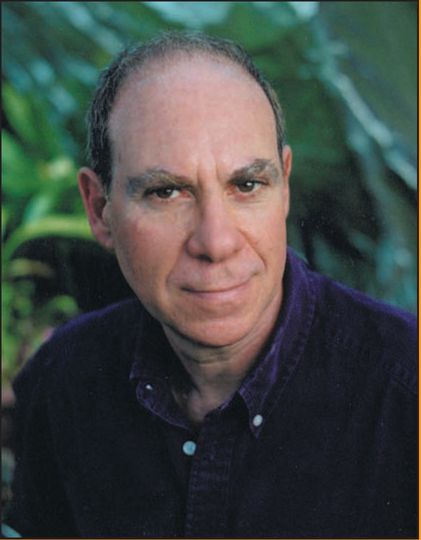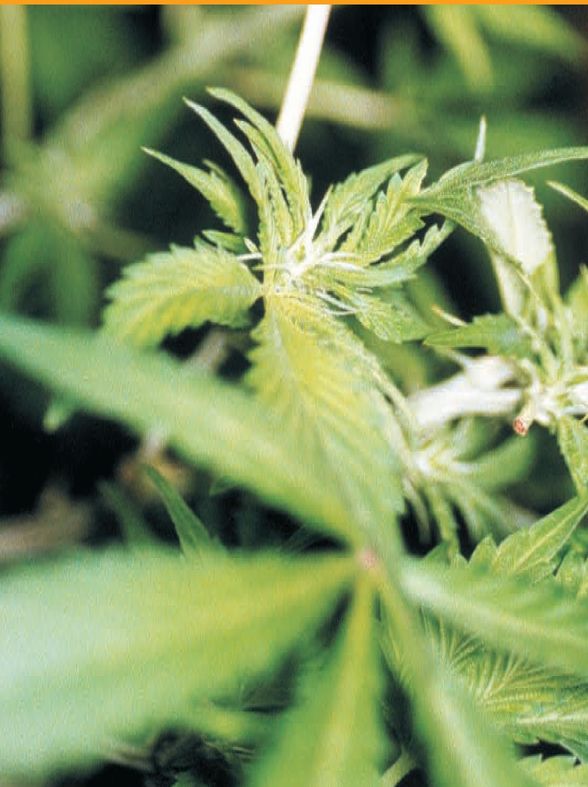Table of Contents
INTRODUCTION
Despite a lack of evidence in their favor, drugwar zealots often claim that using marijuana is addictive. While using marijuana may not be addictive, growing it is. There is good reason for this. Humans have always had a connection to the plant kingdom, and humans and cannabis have developed an affinity for each other. Cannabis is the only plant that produces THC, the substance that fits a brain receptor for anandimide, which is ubiquitous in vertebrates. This turn-on gives us an interest in the plant and, in turn, cannabis has thrived through the attention and assistance humans have provided.
Cannabis has a fascinating history. It was one of the first cultivated plants. It is commonly presumed that all cannabis is descended from plants that were domesticated at some point. Cannabis might have been growing wild in the U.S. Midwest, or in vast fields on the Russian steppes, doing fine on its own, but humans interceded somewhere in its long history, and the plant was cultivated. Unlike most cereals such as maize, rice or wheat, cannabis is so adaptable that when it travels with humans, it often tries life on its own.
Cannabis was probably first used by humans for its high-fat, high-protein seed. The seed was collected from the plant, not the ground. When the collected seed was planted, humans inadvertently selected for seed that stuck to the plant, rather than fell to the ground and the plants evolutionary direction was therefore altered.
At the same time the two species bonded. This symbiotic relationship preceded modern religions, national governments, our concepts of morality, and our secular understanding of the world. Cannabis and humans met under the stars of a night sky, clear and unpolluted.
Hemp seed was a nutritious, high-energy food when boiled into mush or roasted and eaten crackling. However, the big surprise came when the deseeded branches were placed on the embers to produce a flash of heat. Fragrant sweet smells filled the air and within minutes the camp sitters were intoxicated on THC. Humans and cannabis made magic together, becoming co-species. The many uses of cannabis as food, fuel, construction material, cloth, medicine, and herbal intoxicant as well as its adaptability to many environments made it a perfect traveling companion and helped human societies to evolve. As the only plant to produce THC, cannabis developed a special relationship with the human species, likely the only vertebrate that craves its high.
Cannabis has no close relatives in the plant kingdom. It is classified as a single species in its own genus. Its closest relation, the hops plant, produces its own psychoactive substance, lupelin. To my knowledge, cannabis is the only true annual plant that is dioecious, which means it has separate male and female plants.
The unique and versatile uses of this plant have allowed the genetic pool to diversify, resulting in plants with widely varying characteristics. Different cannabis strains exhibit an impressive range of environmental preferences, morphology and production of cannabinoids.
Cannabis gardening has changed more in the last 30 years than in the 7,000 years previous, which is the amount of time cannabis has allowed humans to cultivate it. Rather than accepting traditional farming methods, or perhaps out of necessity, modern marijuana gardeners and farmers have advanced the practical technology of growing. I have been privileged to document the development of many of these new techniques. One important area of development is the focus of this book: indoor cultivation.
Gardeners moved indoors in the 1970s. Since that time, experiments and debates have been ongoing as to the best way to grow indoors. Of course the biggest factors, beyond good genetic stock, relate to environmental controls. These include lighting choices, temperature, humidity, fertilizing and other garden supplements that contribute to healthy plants and healthy harvests.
Gardening is an age-old art, but indoor cultivation combines green-thumb intuition with new science and technology. Indoor planting can seem very complicated. Getting information from manuals and other sources of guidance is key, but sometimes the choices involved whether to grow hydroponically or in planting medium, what types of nutrients and fertilizers are required, what type of lighting to use can be intimidating ones.
This collection lets you look into the gardens of real people and see how they have answered these questions. It shows exactly what happens in real life in gardens ranging from low- to high-tech. It explains gardening both hydroponically and in conventional planting mixes. In the process, it offers a hands-on view of many different types of indoor methods, as well as some simple principles and tips to help increase quality and yield in virtually any type of garden.
The reason I like this project so much is because the essays are about people and their plants. The common thread is that the gardeners have a passion to produce excellent marijuana in their spaces. This book gives me an opportunity to provide you with a comprehensive look at cultivation from the gardeners vantage point. It was a pleasure to view and report on these gardens. I hope the essays and photos transmit to you some of the excitement I felt when I was in the field.
Ed
Indoor Growing
This homemade tray was painted with plastic resin for waterproofing. The small room with a tray on either side was constructed in the basement. The plants were hand watered from the top. The water drained to the reservoir underneath.
Cannabis
Cannabis is an annual plant. Each spring the plant germinates and begins a period of rapid growth. As fall approaches, the plants growth changes from vegetative to flowering or reproductive.
Female and male flowers are found on separate plants. To produce seeds, pollen from male plants must fertilize the female flowers. When the male plants are removed from the garden, the females remain unfertilized. The resulting clusters of virgin flowers are called sinsemilla Spanish for without seeds. These buds are prized by the marijuana connoisseur.
Undisturbed by gardeners, the male plants will release their pollen into the air, lose vigor and die. The female plants continue to produce flowers for quite a while as long as they remain unfertilized. Once fertilized, the small ovary found behind each flower begins to swell and within a few weeks, mature seeds are produced. When most of the flowers are fertilized, the plant ceases to produce new flowers. Instead, most of its energy goes to the maturing seed. As the seeds mature, the female plant also loses vigor and dies.


